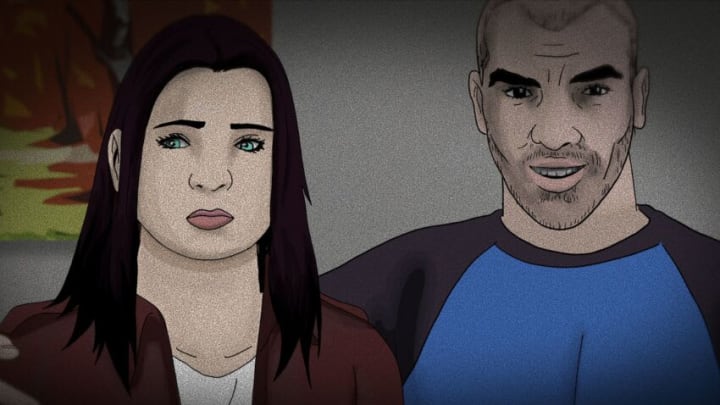I am a sucker for the true crime series on Netflix. You know the ones I’m talking about: They sometimes only include four or five episodes, and always leave you wanting more.
Most recently, I was drawn into My Lover My Killer and I am a Stalker, but I discovered two very compelling Netflix true crime series just within the last week, and I have now full-on binged both. That’s not as impressive as it may sound, since Worst Roommate Ever consists of only five episodes, one of them a two-parter, and Missing: Dead or Alive has a scant four episodes available.
First, let’s talk about Worst Roommate Ever. This series was presented in an unusual way; as in most true crime docs, it included the first-hand recounting of each tale, as presented by witnesses, family members and law enforcement, but parts of the story were told through the use of animation. It was a surprisingly effective technique, and the animated characters look very much like their real-life counterparts.
The first episode dug into the case of Dorothea Puente, who ran a boardinghouse out of her home, providing rooms for unfortunates. That makes her sound like a really good person, right? Nope. It seems this “sweet little old lady” was killing off her boarders and cashing their social security checks.

Episode two focuses on Maribel Ramos, whose ad looking for a roommate resulted in K.C. Joy moving in. Older than Maribel, K.C. nonetheless ended up falling in unrequited love with her, and we hear the 911 call Maribel placed, telling the dispatcher that she is afraid of what her roommate might do. She had requested that he move out, and he got ugly with her about it. When Maribel disappeared, her family immediately suspected Joy.
In episode three, we meet con man Youssef Khater, whose story is told by his victims and former roommates. Since Callie is the person he actually tried to violently murder, her narration is the most compelling. Yousseff, Callie and a couple of others were roommates in Chile, and most of the friends seemed to like the man at first. He was charming, and regaled them with stories of his adventures in the Royal Danish Navy and as a marathon runner. Callie had her suspicions, and the story that unfolds is jaw-dropping.
Episodes four and five place the focus on Jamison Bachman, a charming “serial squatter.” He had a habit of moving in, then refusing to pay rent; not only that, his law degree gave him knowledge of how to avoid eviction. He was even able to have one roommate removed from her own property. Bachman managed to get by with this for years, and over time, his behavior began to grow more violent. Ultimately, he committed murder.
Each of the true crime stories recounted in Worst Roommate Ever are creepy and horrifying, and the accounts of victims and family members are often heart-breaking.
Missing: Dead or Alive is a bit different from other Netflix true crime series I have watched. It not only tells the stories of the missing persons that are featured, it also delves into the lives of the South Carolina law enforcement personnel involved in searching for them.
I have to admit, the up close and personal style this true crime series is filmed in had me questioning whether or not it was a documentary at first. About halfway into episode one, I finally figured out that it was not a scripted series, and the people we were watching were actually not characters.
Those people are Investigator Vicki Rain, Investigator J.P. Smith and their supervisor Heidi Jackson. All of them are extremely passionate about the work they do in Missing Persons, despite the fact that it is hard, sometimes thankless work. Not only that, it’s emotional work, and it is starting to wear on Vicki, who ends up having to decide whether or not she wants to return to Major Crimes.
During the run of the series, we are given the stories of four different people who have been declared missing. First, we have Lorraine Garcia, whose sudden disappearance is suspected to be due to her son.

Next up is the case of Amira Watson, a 10-year-old girl who has been abducted by her mother after full custody was given to her father. We get to see Smith lose his cool at one point, and tell the girl’s aunt (who seems to be aiding mom) that she needs to do the right thing. He says that mom has taken Amira and run and that people who have done something wrong are the ones who run.
Episode three deals with David Taylor, who went missing while on the way to cash in a $10,000 scratch-off ticket. His truck was found by the side of the road with his wallet (sans ticket) left inside. As the team digs into David’s life, they find out some very intriguing secrets.
The final episode is about missing teenager Sierra Stevens. A foster child, the 17-year-old never came home after going to the movies, and the team hopes that she has not become a sex trafficking victim.
Only one of these stories had an outcome that I was expecting, which made this true crime series especially compelling to me. I am disappointed that there were only four episodes, and I sincerely hope that Netflix will bring it back for another season.
